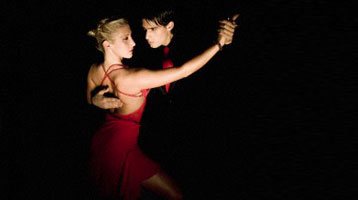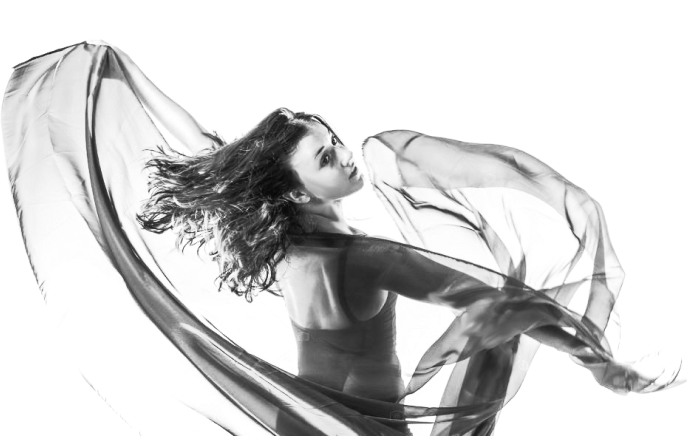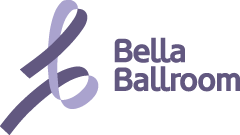
Latin Dance
Bolero
The Bolero is a slow Latin dance with roots in Spain and Cuba. It is a unique dance with Latin as well as Ballroom dancing characteristics. The sliding steps, soft hip motion and close dance hold make this a romantic and powerful dance style.
History of the Bolero Dance
The Bolero originated as a Spanish dance in 1770s and had many different names. It was known as the “Escuela Bolera, “Goyescas”, and “Baile de Palillos”. Bolero dancing fused common popular dances with classical ballet to create a dance that was more polished for stage. It combined contradanza with the sevilana.
The Bolero started as a dance for a couple, but later became adapted for larger venues that needed more dancers with more technical choreography and moves. The Bolero developed for a theater setting due in part to the influence of Italian Ballet specialist who frequently performed in Spain during this time.
During the 19th Century, Bolero dancing really began to evolve and gain recognition due to the opening of the Escuela Bolero (Bolero School). Spanish dancers performed the Bolero in Spain and in throughout Europe. Bolero dancing soon became known in several European capital cities. The Bolero’s contact with European Romantic and Post-Romantic Ballet between 1835 and 1880 influenced its development.
The development and success of Bolero dancing continued into the 20th Century. The Escuela Bolero expanded with more schools opening throughout Spain. Spanish dancers and dance companies included Bolero performances in their shows particularly from 1940 to 1965. Bolero dances were accompanied by castanets and guitars.
While the Bolero was originally danced in 3/4 time in Spain, it was changed in Cuba initially to 2/4 time and then eventually into 4/4 music in the 1800s. The Cuban Bolero originated in Santiago de Cuba in the last quarter of the 19th century. The 19th century. Cuban Bolero music developed with the traveling musicians of Santiago de Cuba who earned their living moving around singing and playing the guitar. Bolero dancing is often called the “Cuban Dance of Love” because of it’s slower, dreamy tempo and romantic melodies. The Bolero was introduced to the United States in the mid-1930s and during that time it was danced in its classical form.
Bolero Dance Today
Today, in the United States the Bolero dance is known as one of the competition dances in the American Rhythm ballroom dance category. It is one of the five competitive American Latin style competitive dances. The Bolero is danced with both Ballroom and Latin characteristics. The first step is typically danced on the first beat and held during the second beat with two more steps falling on beats three and four. In competitive dance the music is in 4/4 time and ranges between 96 and 104 beats per minute. The dance has a “rise and fall” and a closed dance frame position that is much like the Ballroom Waltz. However, it also uses hip motion and Latin style gliding steps. The Bolero is danced to very slow, melodic Latin and contemporary music.
A version of the Cuban Bolero is danced throughout the International Latin dance world and supervised by the World Dance Council, a registered company established to provide an agreed basis for holding world championships for competitive ballroom dancing. This version of the Cuban Bolero is labeled under the misnomer “rumba’ and came out in the early 1930s when a simple overall term was needed to market Cuban music and dance to audiences unfamiliar with the Latin music and dance terms.
Today, Bolero is most popularly danced in dance studios and ballroom studios. While it is a social dance, it is not embraced as much socially as it is competitively. Popular reality competition dance shows often feature Bolero dancing as a dance style challenge for its dancing competitors.
Bolero Dance Music
- “La Mentira” Luis Miguel
- “I’m Still Breathing” Katie Perry
- “No Valio La Pena” Rafael Basurto
- “Do You Wanna Dance” Bette Midler
- “Besame Mucho” Ricardo Montaner
- “Underappreciated” Christina Aguilera
- “Senor Bolero” Jose Feliciano
- “Underappreciated” Christina Aguilera
- “Como He Podido Estar Sin Ti” Gilberto Santa Rosa
- “Should’ve Never” Jennifer Lopez
- “Somewhere in the Night” Barry Manilow
- “Take A Bow” Madonna
- “I Could Fall in Love” Selena
- “Volver a Amar” Cristian Castro
- “Angels” Robbie Williams
- “Bohemio Enamorado” Donato Poveda
- “Casi Un Bolero” Ricky Martin
- “Cosas De Enamorados” Juan Gabriel
- “Como Fue” Salsa America
- “Angelitos Negros” Olivia Molina
- “All the Man that I Need” Whitney Houston
- “Vas Alla” Gloria Estefan
- “Missing You Now” Michael Bolton
- “Could I Have This Kiss Forever” Whitney Houston feat. Enrique Iglesias
- “I Just Can’t Stop Loving You” Michael Jackson
- “Mi Reflejo” Christina Aguilera
- “Come Rien” Joe Cuba
- “Encadenados” Ned Nelson
- “Eres Todo En Mi” Ana Gabriel
- “Hazme El Amor En El Alma” Osvaldo
- “Hay Amores y Amores” Rocio Durcal
- “Estos Celos” Roberto Carlos
- “Eres Todo En Mi” Ana Gabriel
- “Falling Into You” Celine Dion
- “Cuando Me Enamoro” Andrea Bocelli
- “Love Will Keep Us Alive” The Eagles
- “Ballerina Girl” Lionel Richie
- “Mandy” Barry Manilow
- “My Heart Will Go On” Celine Dion
- “Mucho Mucho” Roberto Delgado
- “Miedo a La Soledad” Osvaldo
- “You’ve Got a Friend” Tom Jones
- “Verdad Amarga” Linda Ronstadt
- “Una Vez Mas” Juan Gabriel


